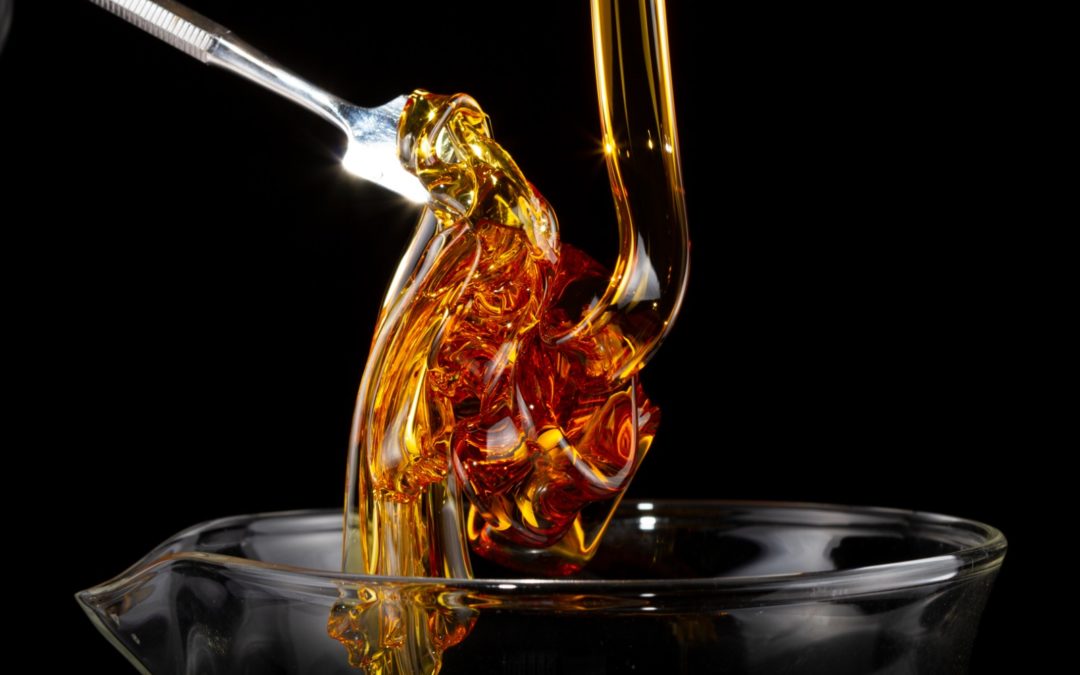Concentrates, made by extracting key ingredients from marijuana and hemp plants, can offer consumers a “higher” level of cannabis experience. Just as there is a wide variety of concentrate products, there is a wide range of extraction equipment and methods. And new techniques and technologies are constantly being invented.
So, many consumers new to the cannabis scene are uneducated about extraction and what each method is all about.
The first thing you need to know about extraction is that it should be left to the professionals. Without specialized knowledge, equipment and experience, any extraction process can be dangerous.
However, when done correctly and safely, extractions create a host of high-powered products that can meet the needs of experienced recreational users and medical cannabis patients alike. Knowing more about extraction can help new consumers cut through the confusion and lead to an easier and better customer experience at the dispensary.
Cannabis concentrates, also known as extracts, come in a wide variety of compositions, consistencies and potencies. The extraction process can use agitation, heat, ice, compression and other methods to isolate and concentrate the cannabinoids, terpenes and other valuable compounds in cannabis plants. As a result, concentrate products are generally far more potent and activate immediately upon consumption.
Many marijuana manufacturers use extraction techniques that intentionally remove the plant’s aroma and flavor elements, and isolate its THC. Other flavors and ingredients can then be added to the THC to produce completely new products.
The most common extraction methods used by manufacturers today include:
Solventless Extraction
There are two commercially viable methods of solventless extraction: Ice water extraction and rosin pressing. With ice water extraction, plant material is submerged in cold water, causing the trichomes to become brittle. The material is then agitated with a mixing spoon and ice to physically knock off the trichomes. Ice water hash is easy to smoke, and when made well, is quite clean.
In rosin pressing, the cannabis biomass or hash is measured into a micron screen bag then put between two heated plates. These plates are then pressed together to squeeze the cannabinoids and terpenes out through a channel, leaving the undesirable material behind on the plates.
Unlike solvent methods, there is no extensive post-processing. Basically, the material is left to dry and cure, and perhaps pressed into a solid form. It is the safest approach to extraction.
These methods are relatively time consuming and tend to yield very small batches. This leads to issues with throughput and an increased cost to manufacture. Ice water extractions have become more scalable with new technology, but rosin pressing has a finite capacity.
Over the past few years, live resin has become one of the most sought-after cannabis concentrates on the market. Even though processing costs have decreased, live resin still commands a premium price. That’s because it can take 1,000 grams of frozen flower cannabis to make 250 to 275 grams of live resin shatter, depending on the strain.
Live resin is made from freshly harvested cannabis plants that are immediately flash-frozen and kept frozen during the entire extraction process. Most cannabis extraction techniques involve allowing the cannabis plants to dry and cure before the extraction. This leads to a degradation of terpenes that create each strain’s distinct flavor. Preserving terpenes found within the plant’s trichomes preserves the plant’s smell and taste.
Live resin was created by noted cannabis grower and folk hero William “Kind Bill” Fenger. When Colorado legalized medical marijuana in 2000, Fenger returned to his home state. In 2010, he started the first legal grow dedicated to concentrate production. It was around this time that he began focusing on experimenting with different extraction methods.
“As I would trim my harvests,” Fenger told High Times magazine, “I always thought, ‘How cool would it be to be smoking oil from this plant while I’m doing this?’ The smell of the plants when they’re still alive, or while they’re being trimmed, is so intoxicating compared to dried buds … that’s what I wanted in an extract.”
Fenger experimented with processing a batch of BHO not from dried buds or dried trim but from an entire freshly harvested plant that had been immediately cryogenically frozen. The rest is cannabis history.
Light Hydrocarbon
Hydrocarbons are extremely volatile organic chemical compounds that contain only carbon and hydrogen atoms. The two most commonly used hydrocarbons in cannabis extraction are propane and n-butane. These hydrocarbons are single-bonded and are classified as non-polar alkanes because their electrical charge is evenly distributed across the molecule. This makes them an ideal extraction solvent because cannabinoids and terpenes also are non-polar.
To produce BHO wax, budder, shatter, sugar and other sought-after “dabs,” cannabis extractors use butane as a solvent to strip the valuable cannabinoids and terpenes from the plant material. Once the butane passes through the bud or trim, a closed-loop system uses specific temperature control and vacuum pressure to filter out impurities and produce the various consistencies of extract that dab consumers prefer.
The final consistencies, color and quality of a BHO concentrate are largely due to the potency and freshness of the flower, as well as the specifics of the extraction process. A tan or golden extract that is stable to the touch is usually the result of a quality BHO production process using a top-shelf flower.
Light hydrocarbons are a gaseous solvent at 30°F and are the most volatile and combustible solvents used in cannabis extraction. These gases are denser than air and sink to the floor, so strict airflow protocols and emergency procedures are necessary in manufacturing facilities.
Propane and n-butane also have a very low explosive limit: the concentration of gas in the air only has to reach between 1.8% and 8.4% to create dangerous conditions. Because of this hazard, all hydrocarbon extractions and secondary processes must take place in a Class 1 Division 1 (C1D1) lab space.
CRC Extraction
CRC stands for Color Remediation Column. This popular processing method adds an extra step to the traditional BHO recipe by using a last-step filtration column that pulls out more imperfections and, most notably, removes most if not all of the concentrate’s color.
To achieve that pigment-washing effect, CRC systems use a three-substance filtration combination. By packing T5 bentonite clay, silica gel and Magnesol (aka frying oil filter powder) into a filter column, extractors can turn dark or amber extracts into white gold. After a run through the CRC, a finished concentrate will retain most of its cannabinoids and terpenes but look more like table sugar than a dollop of honey or a sheet of gold-tinted glass.
Ethanol Extraction
Ethanol extraction enables a manufacturer to quickly produce a lot of raw oil with minimal post-processing. This is a great solution for a processor who wants to make full-spectrum cannabis oil, edibles, distillate or isolate. Raw oil can be further refined to yield extremely high purity levels, with some producers capable of creating 98% pure THC or better.
The biggest drawback for ethanol extraction is that it does not effectively preserve the terpene profile of the plant. Storage of ethanol requires a firm understanding of and adherence to the National Fire Code, and many local governments require a Class 1 Division 2 (C1D2) environment for an ethanol lab.
Carbon Dioxide Extraction
Carbon dioxide (CO2) is a non-polar solvent that is gaseous at room temperature and pressure. However, when CO2 is placed under pressure, it undergoes a phase transition and is transformed into either a supercritical or subcritical fluid that can be used for cannabinoid and terpene extraction.
CO2 aggressively strips away the desirable cannabinoids from the plant material. The cannabinoid-rich solution is then moved through the extraction system to a separator, where the desirable compounds are collected. Due to the gaseous nature of CO2 at room temperature, the concentrates produced from the system are virtually free of residual solvent.
However, the cannabinoid extract that remains is still heavily saturated in the plant’s fats and waxes. This makes CO2 extraction ideal for creating “full spectrum” products, but means they also require additional post-processing to produce a market-ready product.
CO2 is perhaps the easiest and safest method for solvent extraction. But, even though CO2 is not flammable or combustible, the extraction systems used in the process are not completely hazard-free.
A CO2 system is frequently placed under immense pressure, sometimes as high as 2500 psi. If the equipment is not properly maintained, there is the potential for a pressure explosion. Also, because CO2 is odorless and colorless, it is imperative to monitor for leaks.
Once again, instead of taking unnecessary and dangerous risks, it’s safer and a lot easier to leave extractions to the professionals and buy your concentrates from a reputable, well-stocked dispensary like Shango.


